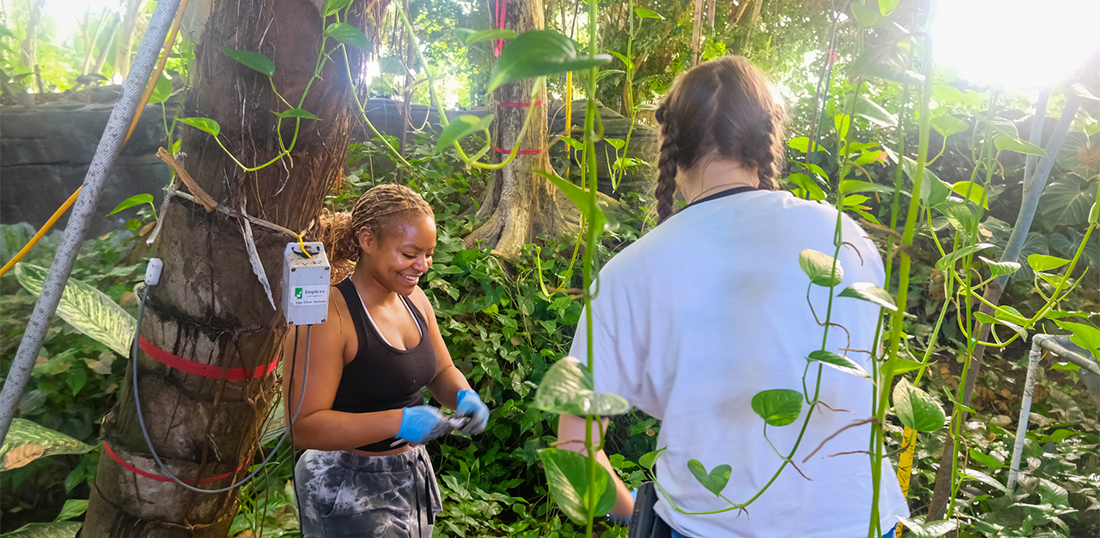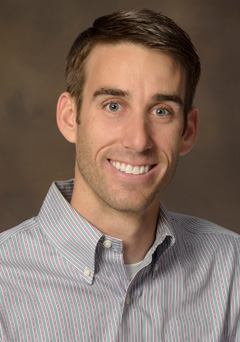Collaborative virus research at Biosphere 2 facility may help prevent future pandemics

UArizona researchers are conducting experiments to measure the lifespans of viruses at the Biosphere 2 facility near Tucson to prevent future pandemics. Photo by Jake Kerr.
Story by Brian Brennan
TUCSON, Arizona — University of Arizona researchers are using the world’s largest controlled environment research facility, Biosphere 2, to study how long viruses can last in the soil and water of different ecosystems. The viruses used for the research are harmless to humans, yet the study will provide data that could help protect humans. The new research will include a viral release from a simulated bat colony to better understand how viruses spread, and to gain knowledge that could help stop a future pandemic.

Marc Verhougstraete, PhD
The Aegis Consortium, an initiative of the UArizona Health Sciences, is partnering with Biosphere 2 to fund the first phase of the research. The project combines Aegis’s mission of pandemic resilience with Biosphere 2’s goals of better understanding natural and human-made ecosystems.
“This research will help us understand how these organisms move throughout the globe, how long they persist, their rate of die-off and decay, and potential effects on the natural environment,” said Marc Verhougstraete, PhD, assistant professor in the Mel and Enid Zuckerman College of Public Health.
The viruses in the study are three different types of bacteriophages. Bacteriophage viruses only infect bacteria and are harmless to humans, plants and animals. Researchers isolated soil and water samples from 13 areas of Biosphere 2, sealed them, and incubated them with the bacteriophages for 21 days. The first two phases of the project are designed to ensure the viruses will not cause any permanent damage to the Biosphere 2 ecosystems.
“We want to make sure this won’t have any lasting consequences to the bacterial communities in the soil and water,” said Luisa Ikner, PhD, assistant professor of Environmental Science in the College of Agriculture and Life Sciences. “While we conduct these good faith exercises, we have already noted some interesting findings. We observed one of the viruses that is more similar in structure to a respiratory virus did not last very long in soil compared to the other two viruses.”
Phase 3 of the project will involve an aerosolized release from a simulated bat colony in the rain forest. The viruses will be allowed to spread through the desert, ocean, savanna and the other ecosystems at Biosphere 2. This will allow researchers to better understand how environmental factors might influence the movement and persistence of viruses globally.
“It would be very difficult to fly around the world collecting soil samples from different environments and trying to emulate the daily variation in temperature and humidity,” said Dr. Verhougstraete. “Biosphere 2 essentially saves trips around the world and reduces lab costs that would be required to recreate those environments. Biosphere 2 makes this research possible.”
Phase 1 of the project began in January and phase 2 is expected to begin later this year.
Biosphere 2 is a meso-scale Earth science facility encompassing 3.14 acres and houses five synthetic ecosystems encased in a glass and metal spaceframe. Operational for 30 years and counting, these meso-scale ecosystems include the world’s largest controlled systems of tropical rain forest, desert, savanna, mangrove, and ocean.

